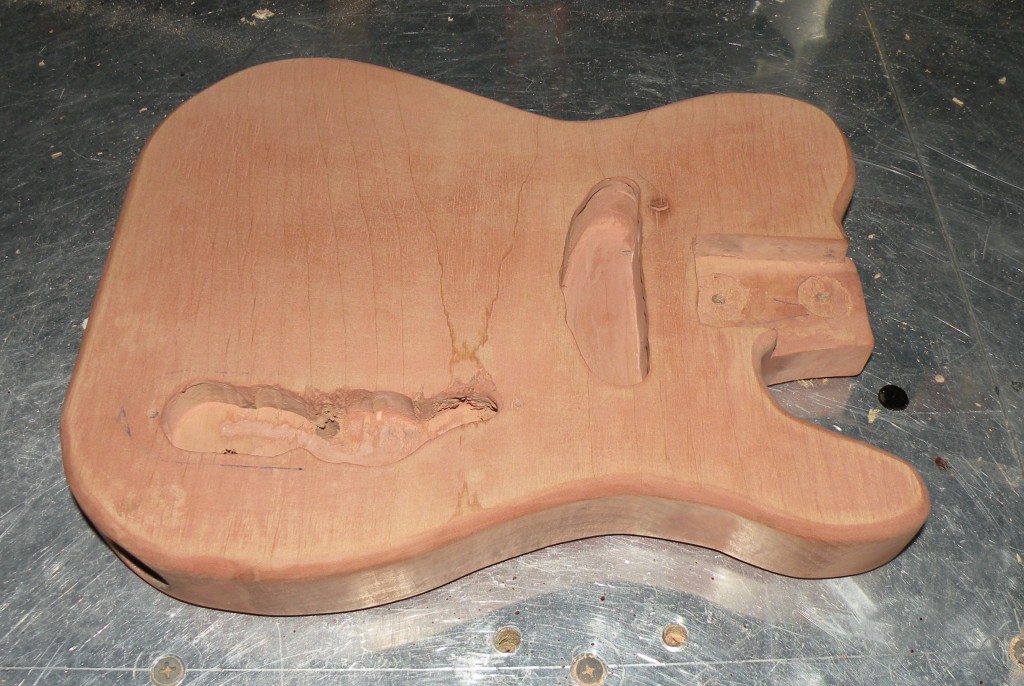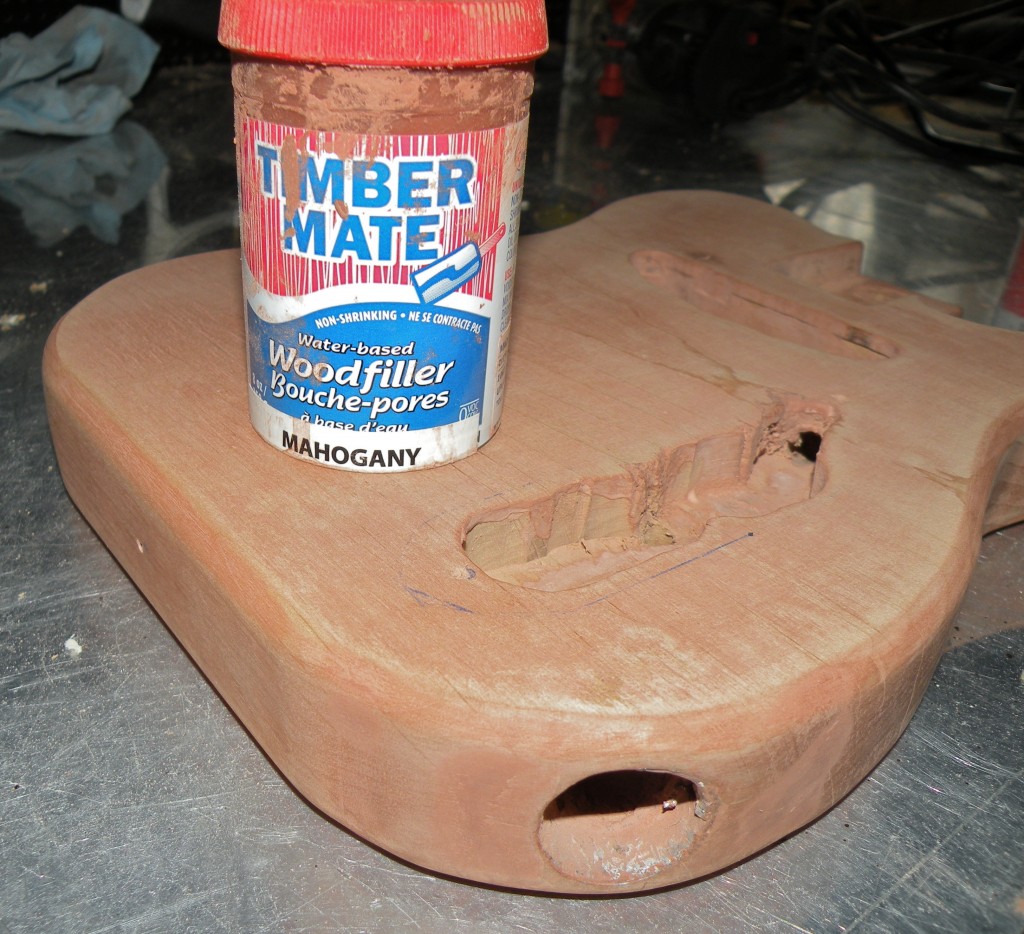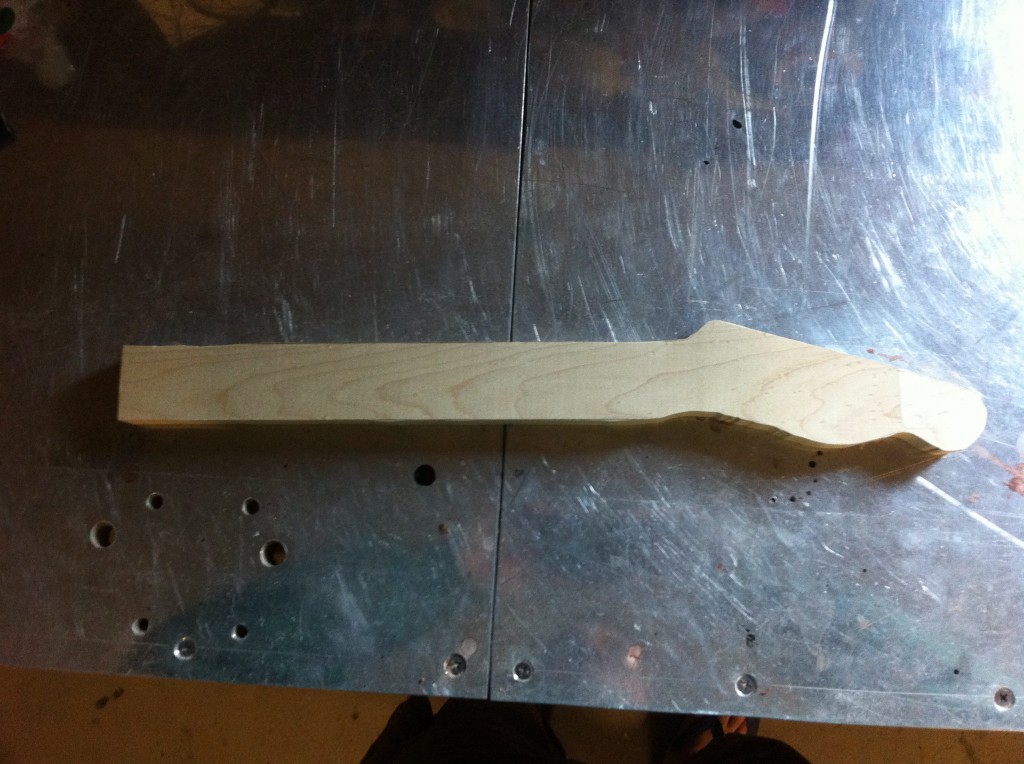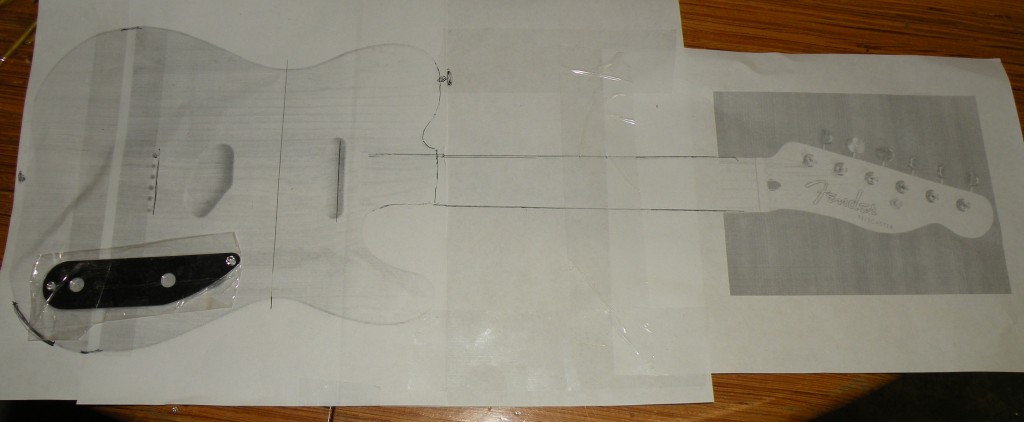To fit the pickup to the uke is not a huge task but it does take a little patience. Firstly, remove the strings from the uke and pop out the white plastic saddle. Underneath it there will be the bridge it rests in that has a trough cut in it to hold the saddle in place. As we are going to be fitting our pickup along the length of this, we need to route it out to ensure that the pickup and the saddle can both fit in. I did this using a dremmel and this attachment :-

I then used a hand drill and a small bit to drill through the end of the bridge so the pickup wire can be pushed through inside the uke.

The pickup lead can then be pushed through and the pickup put in place. Check that the route has left enough space for the saddle to sit in the bridge and still stand upright and that the pickup is flat.
Next I cut the hole for the preamp. This is a good step to do before putting the hole for the 1/4″ jack in as it gives you room to play. Being an all out punk about it, I simply cut into the wood with a strong craft knife until I had what I thought was the right shape. This is not the right way to do it. You should apply masking tape to the wood, draw the size of the hole and cut using more accurate tools, i.e. drill the corners with a small drill and maybe use a dremmel disc between them. This will ensure your hole is the correct dimension and also that you do not spoil the finish on your uke. I am too caveman for all that. I just cut a hole. As a consequence, my hole is ever so slightly too big and i splintered the wood on my uke, although I covered that up with a bit of ghetto red felt tip. In this picture you can see just what a bad job I did. I have already plugged the leads in here though.

Then move on to the 1/4″ jack. I drilled a hole in the side of the uke towards the bottom. I have seen lots of ukes and guitars where the jack hole is where the strap button goes directly opposite the neck of the guitar, but, this area is well braced on these ukes, and it is hard to gauge the thickness of the wood at this part. Electric guitars tend to have the jack hole the bottom edge, so that is where i put mine. I simply drilled it out and pushed the jack through the insides. Again, you should mask the wood to stop splits and breaks in the wood and finish. I am uberpunk. I didn’t and it looks bad. You might want a dob of glue under the nut just to hold both the nut and screw in place.


Next I plugged the 2 leads into the preamp box, and used the plastic table tidy to sit everything in place inside the uke. I then screwed in the preamp box. It is not a perfect fit, and beady eyes will see the mistakes, but I am not bothered 😉 Screw the preamp into place and make sure it holds in well.

I changed my mind about the strings, instead opting now for a set of Aquila’s with a low ‘G’ string to add even more punking action and a bit more bass. I am sure that the preamp box is identical to a guitar version of the same thing and the extra bass of the low ‘G’ should help to fatten out the sound. Besides, I have never had a low ‘G’ uke before.

Finally, I added a punk sticker to the back of the uke…

And the uke is now electric 😀 ROCK!









































